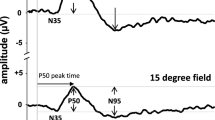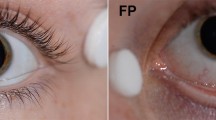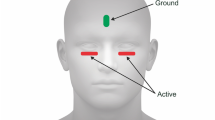Abstract
A recent study found that the gold foil electrode produces large pattern electroretinogram amplitudes, but the test-retest reliability was low. In a three-center study, we observed that 90% of 29 patients who were tested with gold foil electrodes used three times appeared to have markedly lower amplitudes than when tested with new electrodes during the same session. Across study centers, the mean of the new electrode recordings was 3.78 µV (standard deviation, 1.13 µV), versus 2.93 µV (1.29 µV) for used electrodes. This 0.85-µV reduction (22%) was statistically significant (F = 7.10 p = 0.01). Electrodes used three times demonstrated an average change in the coefficient of variation of 14% (standard deviation/mean = coefficient of variation; new, 1.13/3.78 = 30%; used, 1.29/2.93 = 44%). Two of the study sites (Houston/Indianapolis) conducted test-retest pattern electroretinograms on a total of 18 patients and found the mean evoked potential to be 3.55 µV with new electrodes and 2.82 µV with used electrodes. The coefficient of variation for the test-retest data was 30% and 47% for new and used electrodes, respectively. Light microscopy showed small cracks on the surface of the electrode, with the number and configuration of the cracks varying in each electrode. The presence of cracks is further complicated by their proximity to the tear film. These sources of variation can result in significantly different impedances. We propose that constant flexion, as a result of patient blinking, causes cracks in the thin gold surface of the electrode. Used electrodes will produce lower pattern electroretinogram amplitudes and poor test-retest reliability. To minimize these problems, the gold foil electrode should only be used a single time.
Similar content being viewed by others
References
Maffei L, Fiorentini A. Electroretinographic responses to alternating gratings and after section of the optic nerve. Science 1981; 211: 953.
Arden G, Vaegan, Hogg C. Clinical and experimental evidence that the pattern electroretinogram (PERG) is generated in more proximal retinal layers than the focal electroretinogram (FERG). Ann NY Acad Sci 1982; 388: 580–601.
Trick GL. PRERG abnormalities in glaucoma and ocular hypertension. Invest Ophthalmol Vis Sci 1986; 27: 1730–6.
Prager TC, Garcia CA, Mincher CA, Mishra J and Chu HH: The pattern electroretinogram in diabetes. Am J Ophthalmol 1990; 109: 279–84.
Arden GB, Carter RM, Hogg C, Margolis S. A gold foil electrode. Extending the horizons for clinical electroretinography. Invest Ophthalmol Vis Sci 1992; 18: 421–6.
Dawson W, Trick G, Litzkow C. Improved electrode for electroretinography. Invest Ophthalmol Vis Sci 1979; 18: 988–91.
Prager T, Saad N, Schweitzer F, Garcia C, Arden G. Electrode comparison in pattern electroretinography. Invest Ophthalmol Vis Sci 1992; 33: 390–4.
Gjotterberg M. Electrodes for electroretinography: A comparison of four different types. Arch Ophthalmol 1986; 104: 569–70.
Hess R, Baker C. Assessment of retinal function in severely amblyopic individuals. Vision Res 1984; 24: 1367–76.
Millodot M, Riggs RL. Refraction determined electrophysiologically. Responses to alteration of visual contours. Arch Ophthalmol 1970; 84: 272–8.
Prager TC, Schweitzer FC, Peacock LW, Garcia CA. The effect of optical defocus on the pattern electroretinogram in normals and patients with Alzheimer's disease. Am J Ophthalmol 1993; 116: 363–9.
Author information
Authors and Affiliations
Rights and permissions
About this article
Cite this article
Prager, T.C., Fea, A.M., Sponsel, W.E. et al. The gold foil electrode in pattern electroretinography. Doc Ophthalmol 86, 267–274 (1994). https://doi.org/10.1007/BF01203550
Accepted:
Issue Date:
DOI: https://doi.org/10.1007/BF01203550




